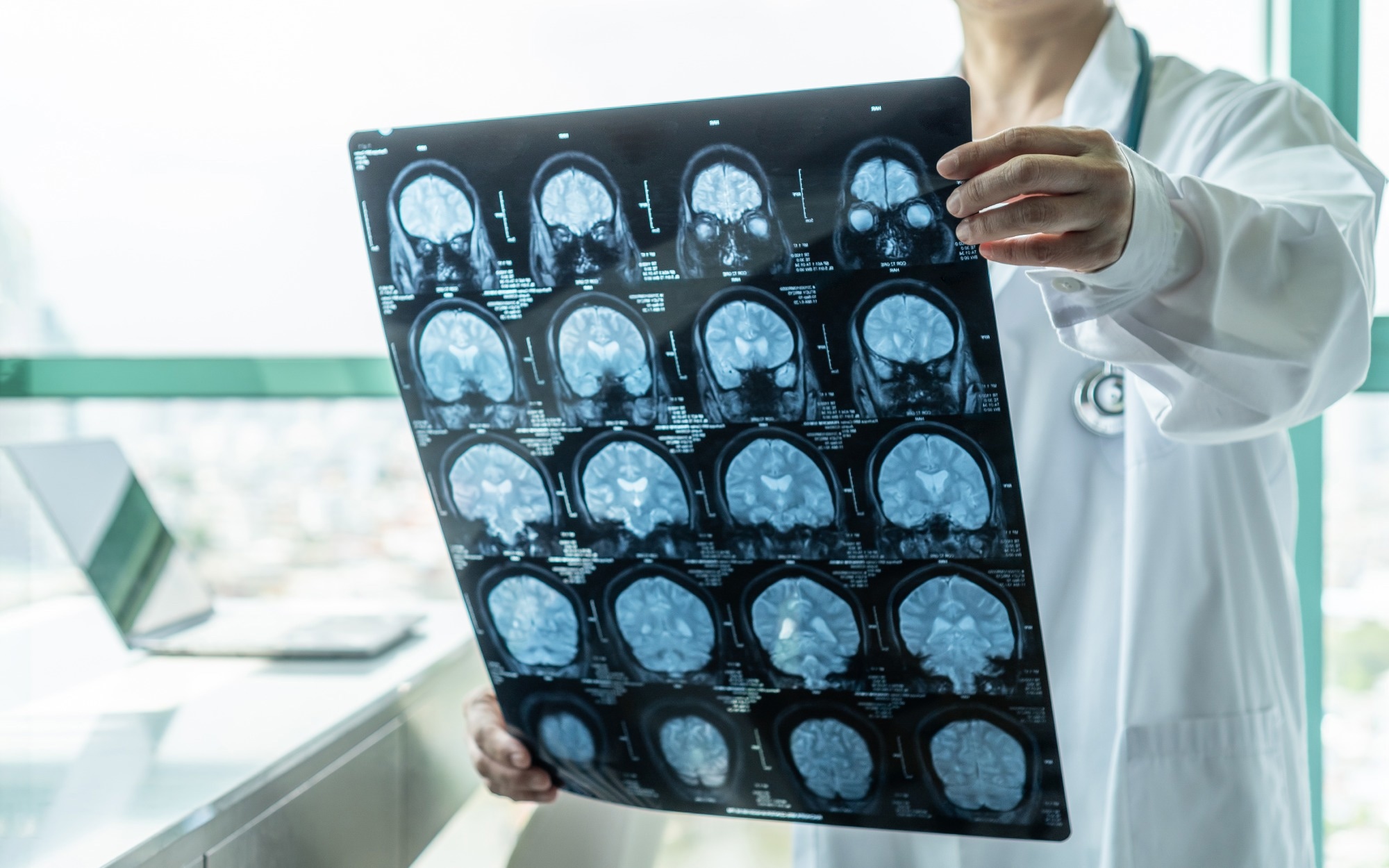The Morris water maze (MWM) is key to neurodegenerative disease research. It is a simple yet highly effective method for assessing cognitive function. The model enables researchers to accurately assess defects in spatial learning and memory caused by neurodegenerative diseases. It is valuable in understanding the processes underlying neurodegenerative disease progression and evaluating treatment effectiveness.
Neurodegenerative diseases, characterized by the progressive loss of brain and/or spinal cord neurons, pose a significant challenge to health systems worldwide. In some cases, neurodegenerative disorders are the second-most prevalent cause of death after cardiovascular diseases.1
With a rapidly aging population, incidences of neurodegenerative diseases and resulting deaths are increasing. The most common neurodegenerative disorders are dementias, which affect approximately seven million people, a figure projected to double by 2040.2
A significant challenge with neurodegenerative diseases is the lack of cure or proper treatment, as the mechanisms causing them are still not fully understood.3 This underscores the need to develop new, more effective, and safer treatments in neurodegenerative disease research and improved methods for earlier diagnosis.2
The MWM protocol has proven an indispensable tool in studying neurodegenerative diseases. The MWM, first described by Michael Morris in the 1980s, is a universal protocol for testing normal cognitive function and can effectively detect deviations in memory function.4

Image Credit: Chinnapong/Shutterstock.com
What is the Morris water maze experiment?
The MWM experiment is a simple, spatial task designed to examine learning and memory in rodents. In the MWM experiment, the rodent must swim in a tank to locate a hidden platform using spatial cues memorized during pre-training.5
The rodent’s spatial memory is evaluated within the framework of the MWM protocol, where the time it takes for the rodent to find the platform and the efficiency of its direct route to the platform are observed.
This experiment can be used to compare the cognitive function of wild-type rodents and those prone to neurodegenerative diseases, helping to identify the molecular mechanisms potentially underpinning these conditions. This method is often used in studying Alzheimer’s disease (AD).5
Numerous MWM protocols exist, each involving different mechanisms of navigation and capable of detecting impairments in cognitive functions of brain regions crucial for learning and memory, beyond just the hippocampus.6
Neurodegenerative disease progression and treatment
Understanding neurodegenerative disease progression is critical for developing more effective treatments.
MWM experiments have been used to assess the role of enzymes expressed in the brain involved in the neuroinflammatory progression of AD. The sEH enzyme’s role in AD development was recently highlighted using this experiment, and research indicates that sEH is a key regulator in AD progression and may serve as a potential therapeutic target for delaying the progression of AD.7
The MWM experiments have also been used to study the impact of overactive microglia on cognitive decline in Parkinson’s disease (PD). By evaluating the cognitive performance of mice through this experiment, researchers investigated the role of microglia in rotenone-induced cognitive deficits.
The findings indicate that activated microglia contribute to cognitive impairments via neuroinflammation, apoptosis, and oxidative stress. These new insights have greatly expanded our understanding of the immunopathogenesis behind cognitive defects in PD.
The importance of MWM experiments also extends to exploring potential synergistic treatment techniques for increased efficacy.
A recent study exemplified this using the MWM model to show the positive interactions between memantine and cholinesterase inhibitors. Combining these treatments proved more effective than individual monotreatments,9 providing important insights into potential complementary therapies.
Conclusion
Due to its simplicity and effectiveness, the MWM is highly useful in neurodegenerative research. It is especially important in understanding the progression of these diseases and identifying potential treatments.
As neurodegenerative diseases become more prevalent, the MWM is more critical than ever for gaining insights to help fight the devastating effects of neurodegenerative conditions on global health.
References and further reading
- Gitler, A.D., Dhillon, P. and Shorter, J. (2017). Neurodegenerative disease: models, mechanisms, and a new hope. Disease Models & Mechanisms, [online] 10(5), pp.499–502. https://doi.org/10.1242/dmm.030205.
- Zahra, W., et al. (2019). The Global Economic Impact of Neurodegenerative Diseases: Opportunities and Challenges. Bioeconomy for Sustainable Development, pp.333–345. https://doi.org/10.1007/978-981-13-9431-7_17.
- Durães, F., Pinto, M. and Sousa, E. (2018). Old Drugs as New Treatments for Neurodegenerative Diseases. Pharmaceuticals, [online] 11(2), p.44. https://doi.org/10.3390/ph11020044.
- Morris, R. (1984). Developments of a water-maze procedure for studying spatial learning in the rat. Journal of Neuroscience Methods, 11(1), pp.47–60. https://doi.org/10.1016/0165-0270(84)90007-4.
- Zhang, W. and Luo, P. (2020). Myocardial Infarction Predisposes Neurodegenerative Diseases. Journal of Alzheimer’s Disease, 74(2), pp.579–587. https://doi.org/10.3233/jad-191225.
- Mulder, G.B. and Pritchett, K. (2003). The MWM. Journal of the American Association for Laboratory Animal Science, 42(2), pp.49-50.
- Lee, H.-T., et al. (2019). Genetic deletion of soluble epoxide hydrolase delays the progression of Alzheimer’s disease. Journal of Neuroinflammation, 16(1). https://doi.org/10.1186/s12974-019-1635-9.
- Zhang, D.,et al. (2021). Microglial activation contributes to cognitive impairments in rotenone-induced mouse Parkinson’s disease model. Journal of Neuroinflammation, [online] 18(1), p.4. https://doi.org/10.1186/s12974-020-02065-z.
- Bruszt, N., et al. (2021). Potentiation of cognitive enhancer effects of Alzheimer’s disease medication memantine by alpha7 nicotinic acetylcholine receptor agonist PHA-543613 in the Morris water maze task. Psychopharmacology, 238(11), pp.3273–3281. https://doi.org/10.1007/s00213-021-05942-4.
About San Diego Instruments, Inc.
For more than 30 years, San Diego Instruments has served the scientific community as a comprehensive resource for the design, manufacture and distribution of behavioral neuroscience research instruments used in human and animal studies. Utilized in laboratories and cited in research papers worldwide, SDI systems have come to represent the industry standard for quality and longevity. Our premier SR-LAB™ is the world’s most widely used startle response system. At SDI, our commitment to developing quality products that stand the test of time is matched only our dedication to excellent customer service. We take pride in our ever-growing core of loyal clientele.
SDI behavioral neuroscience research systems afford you the utmost in quality and performance, giving you the edge in an industry where Power, Flexibility and Ease of Use are everything.
Sponsored Content Policy: News-Medical.net publishes articles and related content that may be derived from sources where we have existing commercial relationships, provided such content adds value to the core editorial ethos of News-Medical.Net which is to educate and inform site visitors interested in medical research, science, medical devices and treatments.